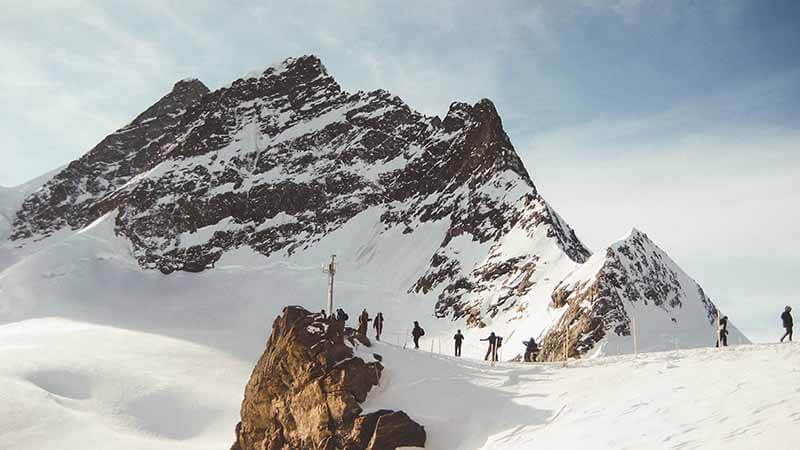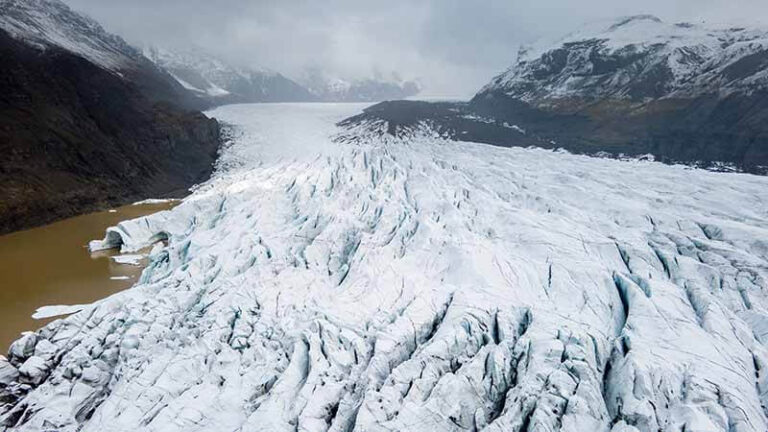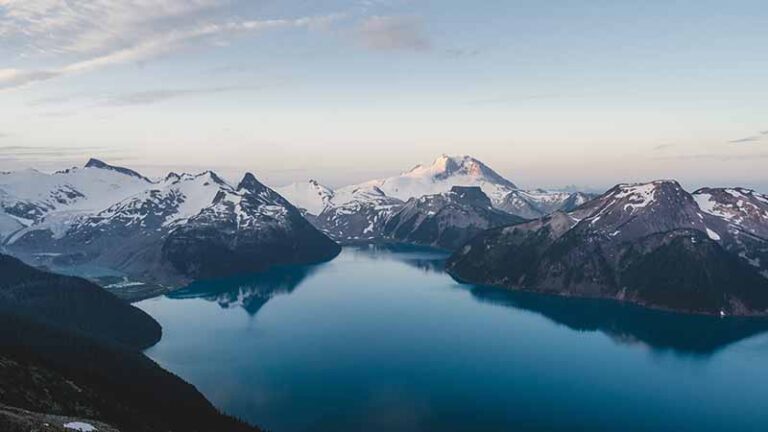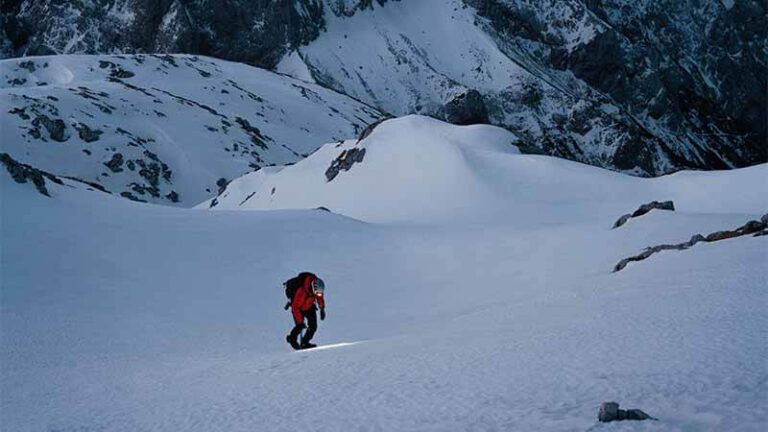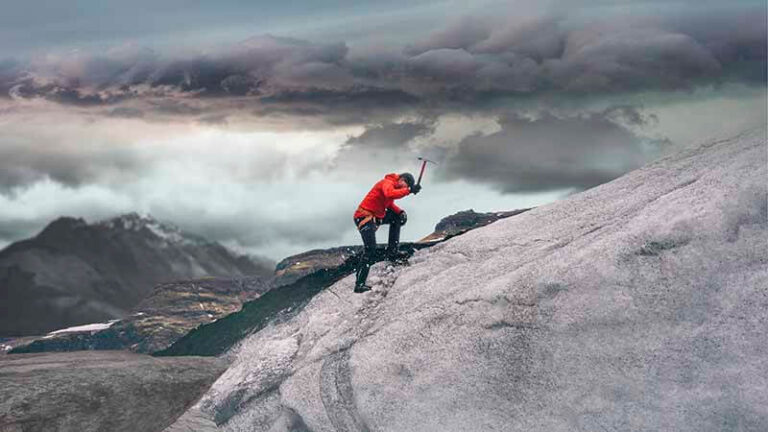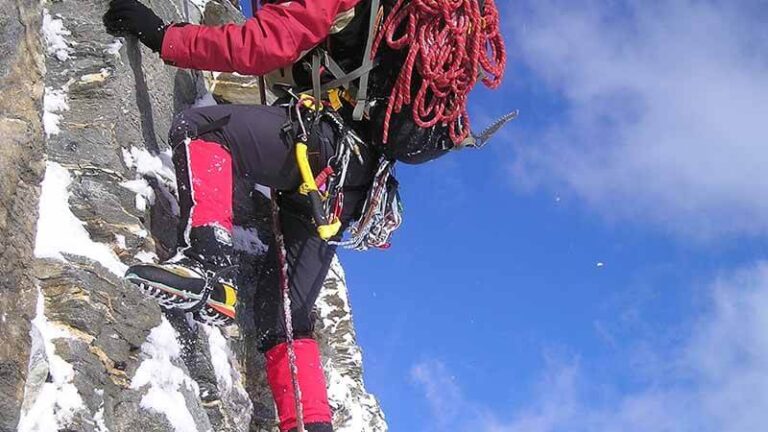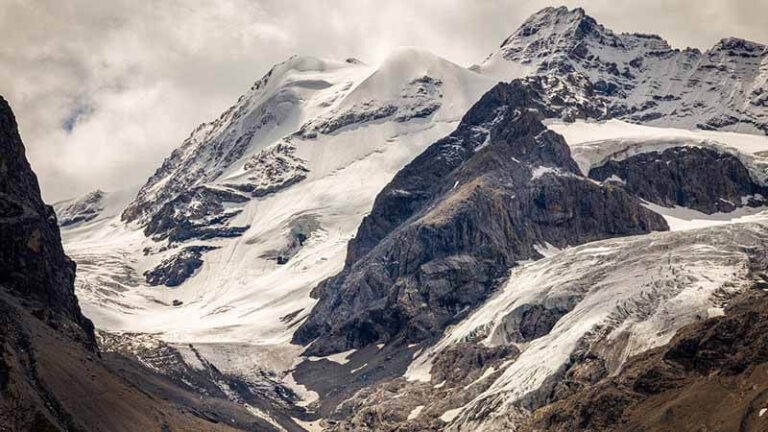What is Ice Climbing? Equipment, Top Places & Preparation
Introduction (What is Ice Climbing)
Ice climbing is an outdoor sport that entails ascending ice formations such as frozen waterfalls, glaciers, and ice-covered rock faces with the help of specialized equipment such as ice axes, crampons, and ropes. It is a physically and psychologically demanding activity that necessitates a great level of ability, strength, and endurance.
Ice climbing has grown in popularity as an exciting and challenging outdoor activity in recent years. Here are some of the reasons:
- Difficulty: Ice climbing offers a unique challenge for climbers looking for something more complicated than standard rock climbing. Climbing ice formations demands a great level of ability, strength, and endurance, making it an excellent exercise for people who enjoy pushing themselves to their limitations.
- Adventure: For those who desire it, ice climbing provides an exciting adventure. Climbers get to visit distant, snow-covered regions and appreciate nature’s splendor from a different perspective.
- Community: There is a vibrant community of ice climbers who share a passion for the sport. Joining an ice climbing organization or club can be a terrific way to meet new people and learn from experienced climbers.
- Fitness: Ice climbing is a fantastic workout that can help you increase your strength, endurance, and general fitness. Climbing ice structures demands the activation of several muscle groups, giving it a full-body workout.
Overall, ice climbing is a difficult and gratifying exercise that provides a one-of-a-kind adventure and a sense of accomplishment for individuals who appreciate the outdoors and physical activity.
History of Ice Climbing
Ice climbing dates back to the early twentieth century when mountaineers began exploring frozen waterfalls and ice-covered peaks. To ascend ice structures, early ice climbers employed basic equipment such as alpine hammers and nails. The activity gained popularity in the 1970s and 1980s as specialized equipment, such as ice screws, crampons, and ice axes, made ice climbing easier and safer.
The exact origins of ice climbing are uncertain, however, it is thought to have begun in Europe in the early twentieth century. Early ice climbers, who were largely mountaineers looking for new challenges, frequented the Swiss and French Alps. Climbers exploring frozen waterfalls in the Rocky Mountains and other mountain ranges pioneered ice climbing in North America.
Ice climbing equipment and technique have advanced dramatically during the last century. Ice climbers in the early days’ employed simple tools and tactics, such as hammering nails into the ice and kicking steps with their boots. Ice climbers nowadays employ specialist equipment like as ice screws, which can be screwed into the ice to form rope anchors, and crampons, which attach to boots and offer grip on the ice.
Ice climbing techniques have evolved alongside equipment developments. Climbers today use a variety of tactics, including front-pointing, which involves using crampons to build footholds in the ice, and dry tooling, which involves using ice axes to scale rock walls with little ice. Ice climbing has also evolved into a competitive activity, with events like the Ice Climbing World Cup attracting elite athletes from all over the world.
Equipment Needed for Ice Climbing
Necessary equipment and their purpose
- Ice axes are specialized instruments used for climbing and swinging through the ice. They give the climber leverage and aid in the formation of secure handholds in the ice.
- Crampons are metal spikes attached to the climber’s boots, giving traction on the ice. They aid the climber in keeping their footing on steep and slick terrain.
- Climbing ropes: These are used to secure the climber to the ice and prevent falls. They are used for belaying and rappelling and are attached to anchors such as ice screws or fixed bolts.
- Harness: A harness is a piece of climbing gear that connects the climber to the rope. It is worn around the waist and legs to uniformly disperse the force of a fall over the body.
- Helmet: A helmet is used by climbers to protect their heads from falling ice, rock, and other debris.
- Belay device: A belay device is a gadget that allows you to control the rope while belaying or rappelling. It adds friction to the climber’s descent, slowing or stopping it.
- Ice screws are specialized anchors that can be screwed into the ice to give a safe anchor point for the rope.
- Carabiners are used to link various pieces of equipment such as ropes and anchors. They are available in a variety of shapes and sizes and are required for safe and effective climbing.
- Quickdraws: These are used to link ropes to anchors such as bolts or ice screws. They are made up of two carabiners joined by a piece of webbing or wire.
- Slings: Slings are used to link two pieces of equipment or to extend the length of an anchor point. They’re made of durable, lightweight fabrics like nylon or Dyneema.
How to choose the right equipment for your skill level
The proper equipment for your skill level is critical for safe and fun ice climbing. Here are some pointers for choosing the correct equipment:
- Seek professional assistance: Before purchasing equipment, it is critical to seek advice from an experienced ice climber or climbing guide. They can advise you on what equipment you need and how to use it securely.
- Consider your skill level: It is critical to choose equipment that is appropriate for your ability level. Beginners should begin with basic equipment and work their way up to more advanced equipment as they gain experience.
- Consider the terrain: The equipment you’ll need will vary depending on the terrain you’ll be climbing. For example, if you’re going to be climbing vertical ice, you’ll need more sophisticated gear like specialist ice axes and crampons.
- Consider your budget: Ice climbing equipment can be costly, so make a budget and stick to it. However, when buying equipment, it is critical not to compromise on safety and quality.
Techniques Used in Ice Climbing
Overview of the different techniques used in ice climbing
- Front-pointing: This is a technique in which the climber climbs steep ice using the front points of their crampons. The climber relies on their ice axes for balance and support.
- French technique: The climber sets their crampons flat against the ice and pushes their weight up the ice with their legs. The ice axes are utilized for stability and support.
- Mixed climbing: This is a technique in which the climber ascends the terrain using both ice and rock holds.
How to use ice axes and crampons
- Ice axes: To use an ice axe, the climber grasps the head with one hand and the shaft with the other. After that, the climber throws the axe into the ice and pulls themselves up. After inserting the axe into the ice, the climber can hook the pick over the ice to offer additional support.
- Crampons: Crampons are strapped onto the climber’s boots, making sure they are snug and secure. The crampons’ front points are then employed to climb the ice.
How to climb steep and vertical ice
- Front-pointing: When climbing steep and vertical ice, the climber kicks the front points of their crampons into the ice and relies on their ice axes for balance and support. To ascend the ice, the climber alternates between kicking their feet and swinging their axes.
- French technique: The climber utilizes the French method to climb steep and vertical ice by placing their crampons flat against the ice and pushing their weight up the ice with their legs. The ice axes are utilized for stability and support.
Tips for staying safe while ice climbing
- Always climb with a partner: Because ice climbing is a dangerous activity, it is critical to climbing with a partner at all times. In the event of a fall or injury, your partner can offer support and aid.
- Wear adequate safety equipment: When ice climbing, always wear a helmet, harness, and appropriate boots. This equipment will aid in your protection in the event of a fall or injury.
- Check the ice conditions: Before climbing, always check the ice conditions. Ice that is excessively thin or fragile can be hazardous, increasing the likelihood of injury or death.
- Utilize proper belaying techniques: When ice climbing, always utilize suitable belaying procedures. Using a belay device and securing the rope to a secure anchor are examples of this.
- Understand your boundaries: It’s critical to understand your limits and only try climbs that are within your skill level. Attempting overly severe climbs increases the danger of injury or death.
Popular Ice Climbing Destinations
List of popular ice climbing destinations around the world
These are only a few of the world’s most popular ice climbing destinations. Whether you’re a novice or a seasoned ice climber, there’s bound to be a spot that matches your requirements and gives an exciting climbing experience.
- Ouray, Colorado, USA: Known as the “Ice Climbing Capital of North America,” Ouray has a wide range of ice climbing routes for climbers of all abilities. In addition, the town holds an annual ice climbing festival.
- Chamonix, France: Located in the French Alps, Chamonix is a notable ice climbing location. The area has a variety of ice climbing routes, including the well-known Mer de Glace glacier.
- Banff, Alberta, Canada: With a variety of ice climbing routes and frozen waterfalls, Banff National Park is a favorite location for ice climbers.
- Rjukan, Norway: Rjukan is well-known for its many frozen waterfalls, making it a popular ice climbing location.
- Cogne, Italy: Located in the Italian Alps, Cogne has a variety of ice climbing routes, including the well-known Cascate di Lillaz.
- Kandersteg, Switzerland: Kandersteg is a popular ice climbing destination, with numerous ice climbing routes and frozen waterfalls.
- Vail, Colorado, USA: Vail is a popular location for skilled ice climbers due to its steep and hard ice climbing routes.
- Hyalite Canyon, Montana, USA: The famed “Cleopatra’s Needle” ice climbing route may be found at Hyalite Canyon.
- Hemsedal, Norway: Hemsedal is known for its ice climbing routes, including the famed “Golsjuvet” waterfall.
- Valdez, Alaska, USA: Valdez is a popular destination for experienced ice climbers due to its tough and remote ice climbing routes.
How to plan a trip to an ice climbing destination
A vacation to an ice climbing destination necessitates meticulous planning and preparation. When organizing a trip to an ice climbing destination, consider the following steps:
- Investigate and select a place: To begin, investigate and select an ice climbing destination that is appropriate for your ability level and interests. Consider aspects such as the available routes, the climate and weather conditions, and the trip logistics.
- Locate a respected guide or climbing service: Next, locate a reputed guide or climbing service to assist you in planning and leading your ice climbing expedition. Look for ice climbing guides who are certified and experienced, and who have positive feedback and referrals from previous clients.
- Gather all necessary equipment: Make sure you have all of the equipment you’ll need for your ice climbing expedition. Ice climbing boots, crampons, ice axes, harnesses, ropes, and other equipment may be included. You can rent or buy climbing equipment from a local climbing shop.
- Plan your travel logistics, including transportation to and from the ice climbing location, hotel, and food. Consider the length of your visit, the cost of transportation and lodging, and the availability of local amenities such as restaurants and shopping.
- Physical and mental preparation: Ice climbing requires a high level of physical and mental fitness. Make sure you’re in decent physical form and have been practicing climbing techniques and skills prior to your trip. Also, mentally prepare for the demands and risks of ice climbing, and devise a plan for keeping safe while climbing.
- Verify weather conditions: Before you go, verify the weather conditions and forecasts for your ice climbing destination. Ice climbing necessitates low temperatures and stable ice conditions, so plan appropriately and be ready to adapt your plans if the weather changes.
You may assist assure a safe and pleasurable climbing experience by following these procedures and properly organizing your ice climbing excursion.
Ice Climbing Competitions
Following these processes and meticulous planning Ice climbing contests is a common way for ice climbers to demonstrate their abilities and compete against one another. Here’s an overview of ice climbing contests, including the many sorts of competitions and several well-known ice climbing events and their histories. You can assist ensure a safe and pleasurable ice climbing excursion by planning ahead of time
Overview of Ice Climbing Competitions
Climbers compete in ice climbing contests by ascending a frozen path, either on natural ice or on manmade constructions, in the shortest amount of time feasible. Competitors are evaluated on their speed, difficulty, and style. Ice climbing contests can be hosted indoors or outdoors, and they can be part of a festival or as a separate event.
Different Types of Competitions
Ice climbing competitions come in a variety of forms, including:
- Climbers compete against the clock to scale a pre-determined route as swiftly as possible in speed climbing contests. The climber who completes the route in the shortest amount of time wins.
- Difficulty Climbing: Climbers are judged in difficulty climbing contests on their ability to climb a difficult route, generally one that has been purposely contrived. Competitors are evaluated based on their technique, style, and route difficulty.
- Combined Competitions: Climbers are rated on their performance in both speed and difficulty categories in combined competitions.
Famous Ice Climbing Events
- The Ice Climbing World Cup: The Ice Climbing World Cup is an annual series of international ice-climbing contests. The International Climbing and Mountaineering Federation (UIAA) organizes the World Cup, which includes both speed and difficulty climbing competitions.
- The Ouray Ice Festival: The Ouray Ice Festival is a yearly ice climbing competition held in Ouray, Colorado. Ice climbing contests, clinics, and demos are part of the festival, which draws climbers from all over the world.
- The Bozeman Ice Festival: The annual Bozeman Ice Festival is held in Bozeman, Montana. The festival features ice climbing competitions, clinics, and demos, and it is one of North America’s largest ice climbing events.
- The UIAA Ice Climbing World Championships: The UIAA Ice Climbing World Championships are a biennial event that brings together the world’s greatest ice climbers to compete for the world championship title. The tournament comprises both speed and difficulty climbing.
Ice climbing competitions have a long and illustrious history, and they remain a popular method for ice climbers to put their talents to the test and compete against others. Participating in an ice climbing competition, whether you’re a beginner or an experienced ice climber, can be a tough and rewarding experience.
Conclusion
Ice climbing is a demanding and unique activity that demands a combination of physical and mental power, technical competence, and the ability to cooperate with and trust others. It provides an exciting experience as well as the opportunity to push oneself to new physical and mental limits.
Ice climbing is a type of outdoor sport that allows people to connect with nature by experiencing the beauty and majesty of frozen landscapes. Climbers must also be aware of their surroundings and acquire respect for the environment in which they climb.
Ice climbing can also be a social activity, allowing climbers to build strong ties with their climbing partners and become a part of a wider climbing community. It also allows you to travel and discover new areas, whether it’s a local ice climbing spot or a vacation in another country.
Overall, ice climbing is an important outdoor sport and exercise that provides physical and mental difficulties, a connection to nature, and a sense of community. It takes a certain level of expertise and attention, but the results are well worth it for those who are prepared to put in the time and effort.

